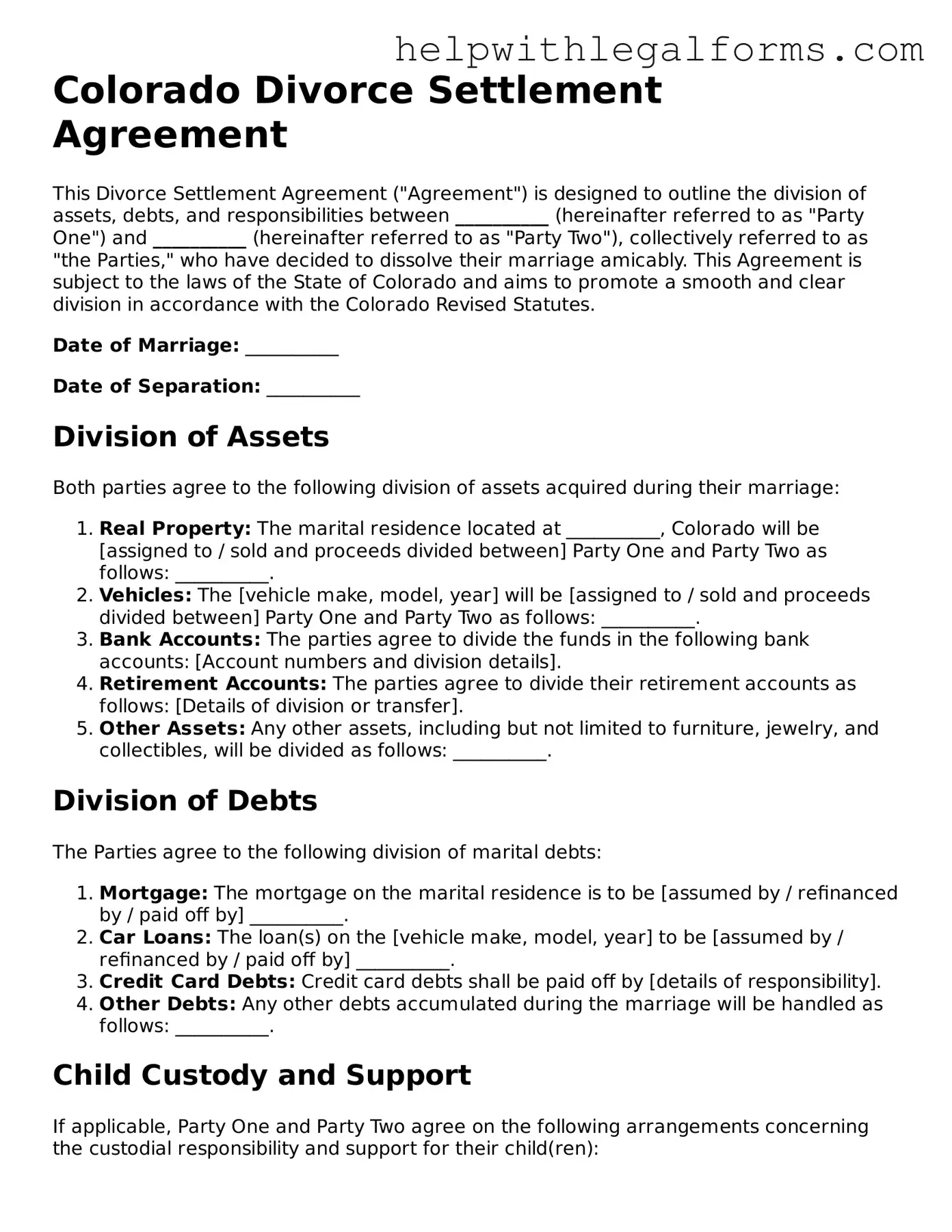What is a Colorado Divorce Settlement Agreement?
A Colorado Divorce Settlement Agreement is a legally binding document in which both parties in a divorce outline the terms of their settlement. This includes divisions of property, child custody arrangements, alimony, child support, and any other relevant matters. The agreement is meant to be a comprehensive settlement that, once approved by a court, finalizes the divorce.
Who needs to create a Colorado Divorce Settlement Agreement?
Any couple seeking a divorce in Colorado and wanting to avoid a lengthy court process should create a Divorce Settlement Agreement. It's particularly beneficial for those who have reached mutual agreements on most or all issues pertaining to their divorce.
How do we decide what to include in our Divorce Settlement Agreement?
Parties should consider all aspects of their marriage and subsequent separation when drafting a Divorce Settlement Agreement. This includes but is not limited to asset and debt division, spousal support, child support, custody arrangements, and visitation schedules. It's essential to address every potential issue to avoid future conflicts.
Is a lawyer required to create a Divorce Settlement Agreement in Colorado?
While it's not a legal requirement to have a lawyer create your Divorce Settlement Agreement, consulting with one is highly recommended. A lawyer can ensure that the agreement is legally sound, fair, and in compliance with Colorado law. Moreover, they can provide valuable advice on complex issues such as asset division and parental responsibilities.
What happens if we cannot agree on all terms?
If both parties cannot reach an agreement on all terms, mediation might be a suitable next step. A mediator can help the parties find common ground and resolve disputes. If mediation fails, the unresolved issues will likely have to be settled in court, where a judge will make the final decisions.
Once we have a Divorce Settlement Agreement, what's next?
After drafting the Divorce Settlement Agreement, both parties must sign it, and then it should be submitted to the court for approval. The court may schedule a hearing to ensure all terms are fair and in compliance with Colorado laws. Once approved, the agreement becomes an official part of the divorce decree and is enforceable by law.
Can we modify the Divorce Settlement Agreement after it's finalized?
Modifying a finalized Divorce Settlement Agreement in Colorado is possible but requires showing a significant change in circumstances to the court. Both parties must agree to the modifications or, if only one party seeks the change, they must file a motion with the court and provide evidence for why the change is necessary. The court will then decide whether to grant the modification.
What should we do if one party doesn't comply with the Divorce Settlement Agreement?
If one party fails to comply with the terms of the Divorce Settlement Agreement, the other party can file a motion for enforcement with the court. This can lead to legal actions such as wage garnishment, liens on property, or other measures to ensure compliance. It’s important to address any violations quickly to uphold the integrity of the agreement.
